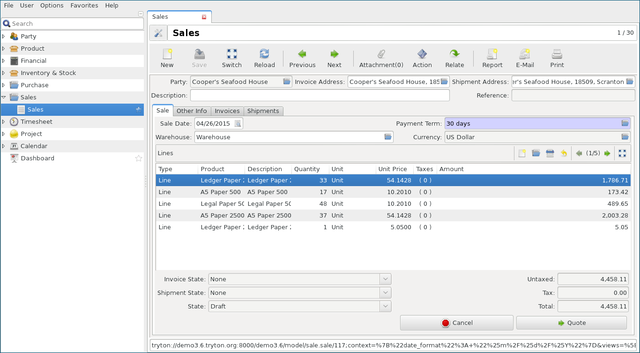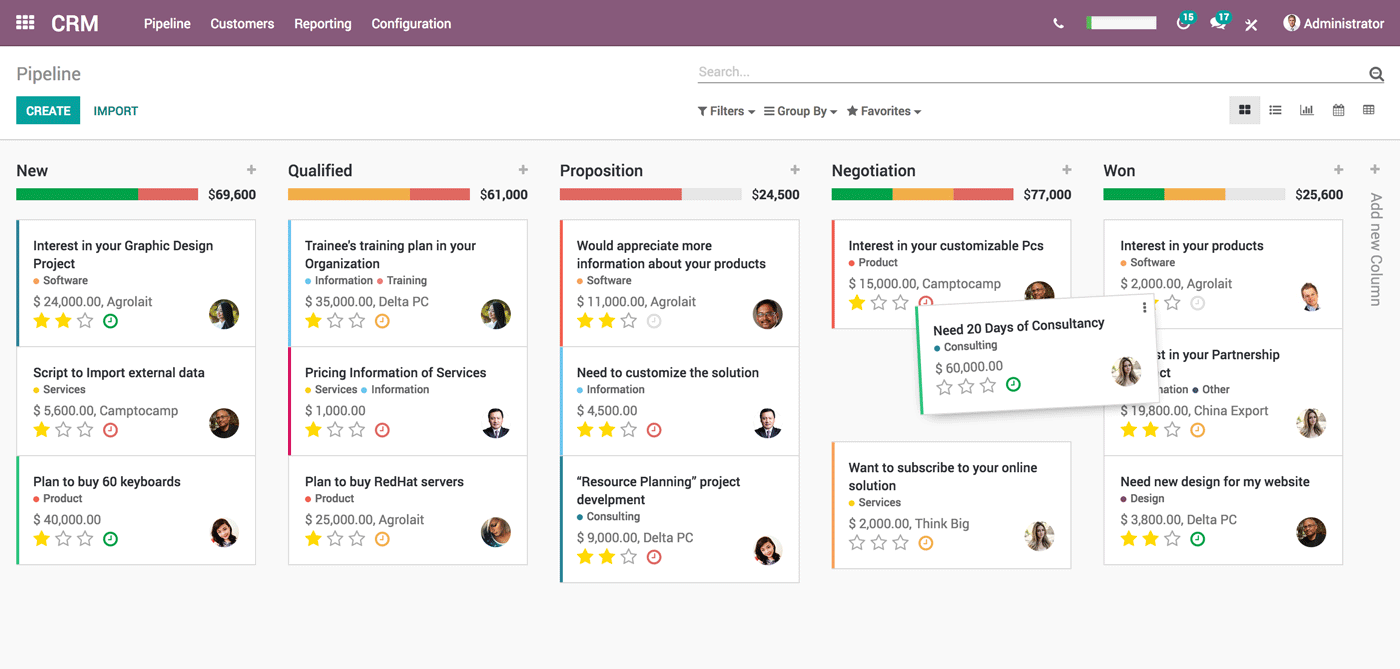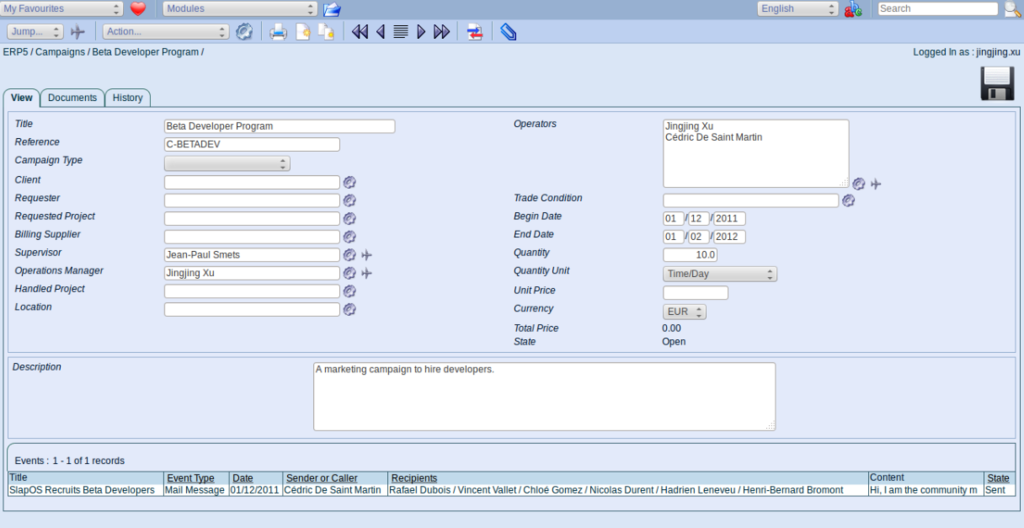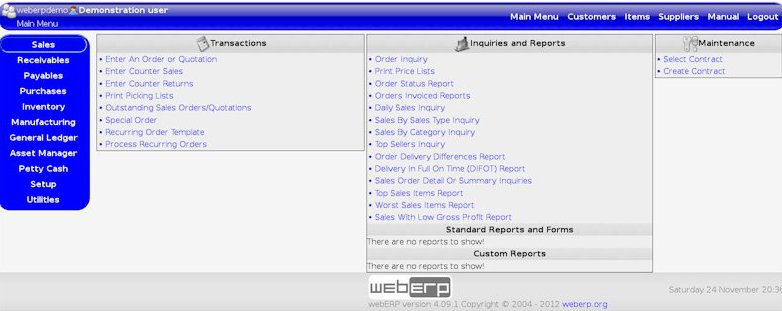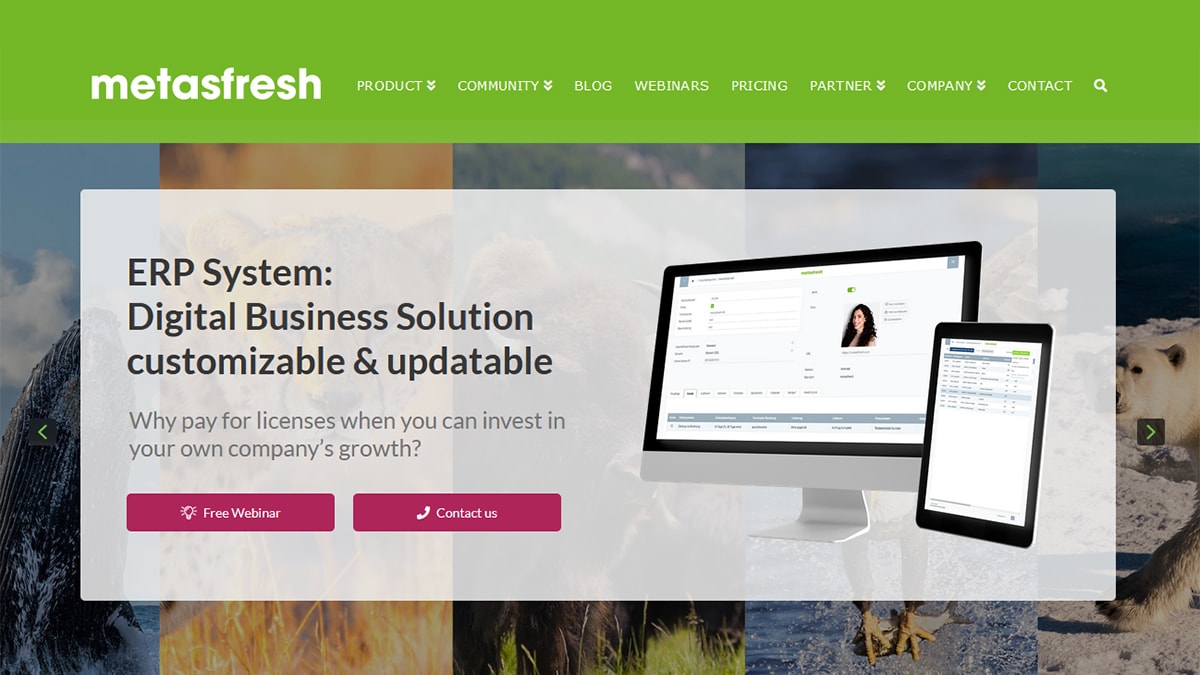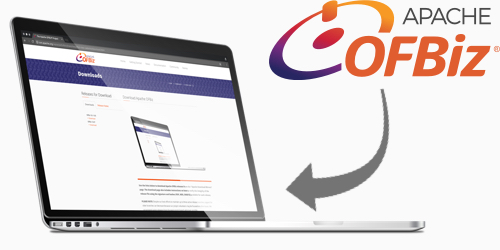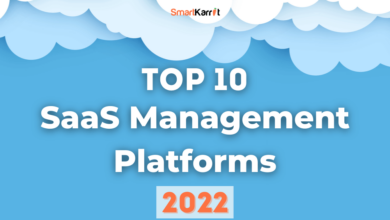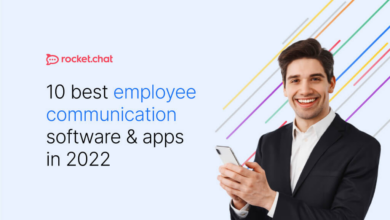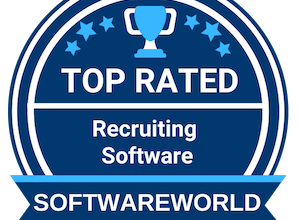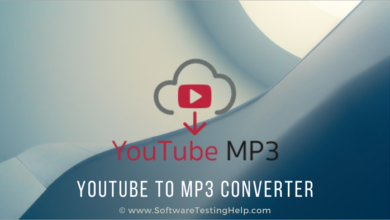9 Best Open Source ERP Software for Self-Hosted System
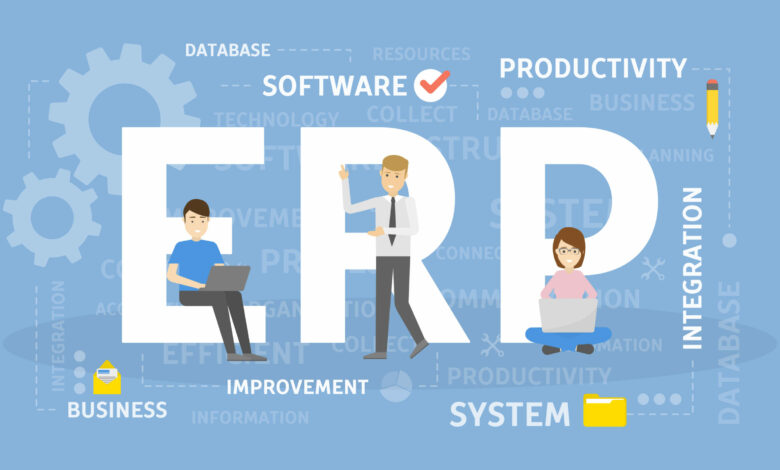
This is a collection of open-source ERP software that can help you manage your business like a pro.
With a family of four, I frequently see resources go underutilised, squandering their life cycles. You can put up with it at home, but doing so in business is never a smart idea. The majority of enterprises mix micro-level heterogeneous systems that require alignment. This is where Enterprise Resource Planning (ERP software) comes into play.
You may now self-host or use cloud management. Self-hosting is a more secure and cost-effective solution. You may host software on your preferred cloud platform while maintaining complete control over modification, security, and so on. However, cloud backup is simple and intended for non-tech-savvy business owners.
So, let’s start with the list and discover what these self-hosted open-source ERP software have to offer.
Best Open Source ERP Software
Here is the list of best open source ERP software for self-hosted solutions for 2022.
1. Dolibarr
Dolibarr adds to the range of free and open-source ERP software. There is, however, a premium edition with additional features and a 15-day free trial.
Features:
- Manage customers, quotes, proposals, subscriptions, and so on.
- Employee management, expenditure records, timesheets, and recruiting help are all part of the job.
- website builder that includes an eCommerce shop and a POS application.
- product catalogue with inventory control. Track shipments, generate bills of materials, and plan material resources.
- Invoice generation, monitoring, and payment administration Reconciliation assistance for locating mistakes or missing entries. Use double-entry accounting to expedite the process of establishing an accounting ledger.
- Send out email marketing campaigns and surveys.
- Individual project income, business prospects, and intervention records are all tracked. A custom calendar for logging events and allocating resources to specified events.
- REST APIs for creating, updating, and deleting data. Connect it to third-party eCommerce systems like WooCommerce, Magento, and others. Data import and export using CSV or spreadsheets.
- A no-code/low-code tool for developing custom modules
You may also buy more modules from the DoliStore. Dolibarr Cloud provides the freedom to enable just the capabilities that are necessary, as well as the possibility to transition to a self-hosted solution.
Furthermore, the cloud version is accessible from any platform. Dolibarr has data centres throughout France and a list of providers in the region.
2. Tryton
Tryton is a 100% free ERP software that may be tested without installing anything.
Features:
Take careful note of every transaction in the chart of accounts.
- Manage products and quotations.
- Oversee shipments, receipts, current inventory with location, and so forth.
- Calculate revenues and costs according to defined categories.
- Lead generation and conversion
- Tracking quotes and group orders
- Track the profitability of particular initiatives.
- Management of subscriptions and third-party integrations
Tryton is managed by a federation of enterprises located all over the world. It started as a branch of Odoo (previously known as TinyERP).
Tryton does not have a premium version as of this writing. The major advantage is that there is no vendor lock-in; you may switch at any moment with no problems.
3. Odoo
Odoo offers a suite of tools for managing all aspects of your organisation. These distinct programmes are integrated but may be purchased individually.
Among the applications are:
- builders of blogs, e-commerce, and eLearning platforms. Create forums and live chats to directly communicate with your customers.
- CRM, quoting, and POS systems are all available. Management of rentals and subscriptions.
- Accounting, invoicing, costs, eSignatures, and other finance apps.
- inventory and manufacturing applications for product life-cycle management, purchasing, maintenance, quality control, and so on.
- Manage hiring, time off, appraisals, fleet management, and so on.
- Email marketing, SMS marketing, event management, and survey management are examples of marketing automation tools.
- Projects, field services and customer service, appointments, and meetings may all be optimised.
- Team communication, VoIP, and IoT management are all available.
- Odoo Studio is used to create mobile apps.
Odoo ERP software is available in two editions: community and enterprise. The community version is open-source and free, but it has restricted functionality.
Start with the community edition and then upgrade if necessary. Cloud hosting, in particular, is free and costs the same as self-hosting subscriptions. However, there are additional fees associated with allowing bespoke modules.
4. ERPNext
Unlike Odoo, ERPNext offers a free edition that includes all modules. As a result, it is completely free and open-source ERP software.
Features:
- Key performance metrics are provided by real-time accounting books. Income and spending monitoring, auto-invoicing, and multi-currency transaction management are all available.
- Inventory, sales, suppliers, and customer tracking are all possible. Track shipments, fulfil orders, and manage multi-channel sales. Email campaigns, for example, are built-in marketing tools.
- Managing personnel, including onboarding, evaluations, and training. Analyze labour requirements, issue job advertisements, and reply to candidates.
- Monitor production cycles, material consumption, capacity planning, subcontracts, and so on.
- Integrate all consumer acquisition channels. Distribute leads among your team members and keep track of each prospect’s case in order to analyse marketing methods. Email marketing assistance.
- This is Agile project management software that allows you to plan, track, and manage deadlines. Assign tasks and integrate them into your employees’ to-do lists. The Chat application is pre-installed.
- Ticket administration, service monitoring, and reporting are all integrated. For speedier responses, automate ticket distribution. To save time on complicated topics, create assistance articles.
- Asset management is used to monitor the lifespan of a product. Track assets’ location, current custodian, depreciation, warranty, transfer, and so forth.
- website builder for mobile-friendly, responsive, SEO-optimized blogs, eCommerce stores, forums, web-chats, and social login keys.
There are two premium tiers in addition to the free ones. The first one supplements the free one with server monitoring, security upgrades, and an optional product guarantee. In addition, the enterprise edition includes implementation consulting and functional and development support.
5. ERP5
ERP5 is a very capable open source ERP software that is available for Linux, virtual computers, and SlapOS Webrunner.
Features:
- Accounting that is workflow-based and supports different currencies. Multi-entity access depends on roles. Compatibility with a variety of common accounting plans (GAP). Asset management with amortisation events generated automatically based on the asset life cycle. planning for future monetary transactions.
- unified activity view with all third parties such as clients, media, suppliers, and so on. Ticket handling and event tracking Document storage in the cloud that supports all main formats. Simple record access and spreadsheet output.
- HR modules handle job postings, training, and the life cycle of a role. Applications for project and inventory management manufacturing module to improve procurement, sales, and customer service.
- eCommerce with robust shopping carts and subscription support. A variety of factors influence pricing.Inventory on many sites with integrated PoS. Discounts for returning clients, social integrations, and so on.
- Product data management is used to govern factors such as selling and cost prices, barcodes, dimensions, and so on.
ERP5 is yet another free ERP application.There are thorough implementation guidelines available. You may, however, always use the services of the native developer—Nexedi.
6. WebERP
WebERP, as the name implies, is a web programme that can be accessed via a browser.
Features:
- Fully web-based with minimum JavaScript for optimum browser compatibility. Collaboration is enabled through role-based access.
- Management of quotations and multiple order dispatch. Auto-pricing depending on variables such as sales type and currency. It calculates freight charges automatically based on shipment and delivery addresses.
- Invoicing and connectivity with all stock records and general ledger transactions. customised sales analysis, with output to PDF or spreadsheets. Accounts are unlimited, and shipping addresses and methods of delivery can be customised.
- Inventory management with an infinite number of warehouse locations and stock amounts. Order cancellation or invoicing triggers automatic backordering. Complete inventory movement history.Stocks of labour and service dummiesInvoices and credit notes are synchronised with stock fluctuations. The ability to add an unlimited number of user-defined categories to each inventory.
- Add as many bank accounts as you like in your desired currency. recording and reporting of overdue payments and receipts automatically. Reconciliation statements based on transaction entries are available online. Keep track of unrealized profits and losses on foreign currency disparities.
- Use the general ledger to manage balance sheets and profit/loss statements. Budget reporting and account investigation for certain periods. User-defined account groupings To avoid changes, post control by freezing prior dates.
- To avoid cyclic BOMs, use a multi-level bill of materials with error tracking. Work orders with numerous output items Work order costing includes automatic weighted average cost and human standard costing support.
- custom job pricing for specific customers. Conversion to quote and sales order is optional. Asset inclusion in a purchase order fixed asset register for a defined time based on additions, depreciation, disposals, and so on.
WebERP software is open-source software that is available for free. It supports a few connectors, such as a POS Windows programme. Similarly, there is a Superb Mini Server, a Slackware-based Linux distribution that is WebERP-compatible.
7. Axelor ERP
Axelor ERP free and open-source ERP software covers almost every element of your business administration.
Features:
- Automatic entry creation from accounting papers. Real-time accounting reports such as general ledgers, discount slips, and so on. Custom tax computations and automatic tax management Credit transfers and SEPA direct debits can be scheduled. help with bank reconciliation.
- The Axelor calendar displays CRM events, holidays, and so forth. Sync with third-party programmes like Google Calendar. Profit analysis, monitoring, and billing are all part of project management. Create and manage contracts with customers and suppliers.
- Leads and clients must be managed. Keep track of future and current sales. Make business events such as appointments and phone calls. Document management allows you to generate, download, categorise, and discover company documents.
- Fleet management includes the development, assignment, and monitoring of vehicles throughout their life cycle. Control rental car contracts, vehicle maintenance, and fuel consumption.
- Cash forecasting, monitoring, and reporting can be done automatically or manually. In addition to SLA management, the helpdesk creates, assigns, and tracks support tickets.
- monitor employee contracts, produce payrolls, manage vouchers, and generate leave reports. manage timesheets, as well as acquisition, training, and assessment.
- Manage your bills and credit notes from suppliers. Create and send out bulk invoices. Calculation and communication of invoice due dates are automated. reporting on financial performance.
- BOMs can be created and managed. “Build orders and manufacturing orders” Planning for finite and limitless capacity is supported. inventory management software that is integrated.
- create and distribute marketing programmes. Campaigns should be linked to prospects and consumers. Invoices, quotations, and other documents may be shared via the built-in messaging tool.
- Project management and team assignment Plan, organise, and document several projects in one location.
- Create, validate, and finalise quotes to automate the creation of purchase orders. Create control invoices, generate receipts, and plan goods’ transportation. Send quotes to several vendors.
- Create a number of quality control points and schedule monitoring. Notification of problems Track each issue’s resolution and overall course of action.
- Sales management is responsible for creating and sending quotes. Create vendor orders or production plans based on sales orders. It creates delivery notes automatically from sales orders.
- Deliveries, receipts, and internal movements are all part of stock management. Inventory management is based on a multi-warehouse tree with minimum stock restrictions.
- Tasks should be scheduled, prioritised, and assigned to teams.
Axelor also has a low-code or no-code platform for developing bespoke apps. You may also try a demo directly from your web browser.
While the free version includes all programmes, cloud editions have additional benefits such as frequent updates, maintenance, and support.
8. Metasfresh
Metasfresh is a feature-rich ERP software with free self-hosting and a premium cloud subscription option.
Features:
- Order import via EDI, spreadsheets, and so on. Calculate delivery time and pick up orders by product or client.
- All consignments are automatically accounted for. Invoice creation and schedule may be customised.
- Invoice payment capture and accounting are automated. Recording customer payments in bank accounts or cash books
- Payment classification depending on client. Compare payments to bank statements.
- Customers might have their own dunning method. Direct subcontracting from orders is simple.
- Incoming commodities are scheduled and sorted. Generation and verification of incoming good invoices
- Payment orders that change based on due dates or buffer periods SEPA payment orders are exported.
According to Metasfresh, the best deployment is for a wholesale or medium-sized organisation. The free option is self-supporting, while cloud hosting includes application support and a 7-day free trial.
There is also the option for advanced assistance, which is now provided through Metasfresh partners in specific regions. All levels have a weekly automatic update mechanism.
9. OFBiz (Apache)
Apache open-source foundation created OFBiz.
Features:
- general ledger with double entry and support for various organisations, account hierarchies, and segmentation. Contracts, credits, and asset management, including depreciation, are all included. Budget management, payment gateway support, and financial reporting are all available. Integration with additional ERP software modules
- create BOMs, as well as production and material resource planning. Job costing and raw material procurement management Billing for equipment and manufacturing reports
- Supervise job postings, applicants, and interviews. Utilize performance ratings to manage current jobs. Create a corporate hierarchy, manage finances, training, and contracts, and so on.
- Multiple warehouses and inventory locations are supported. Management of packages and refunds Create an infinite number of stores and product catalogues. Create pricing guidelines. Online and POS apps are integrated.
- Manage current and prospective consumers. Forecasting sales and email integration. Make a support ticket. email promotion. Order management and quotations
OFBiz is 100% free, and there is an online demo available for testing. You may, however, use third-party cloud providers to host OFBiz for you.
Conclusion
The true cost of deploying ERP software is associated with hosting and support. This is a difficult lesson that my prior employer learnt the hard way and returned to. He was fortunate since the company was tiny and there was no vendor lock-in. Provide a flexible roll-back procedure before implementing any ERP software.
While the free alternative may appear appealing, implementation help and cloud hosting have proven to be lifesavers in the majority of situations.
In general, ERP software with discrete individual apps is the ideal place to begin. Finally, take your time and be well-informed.


